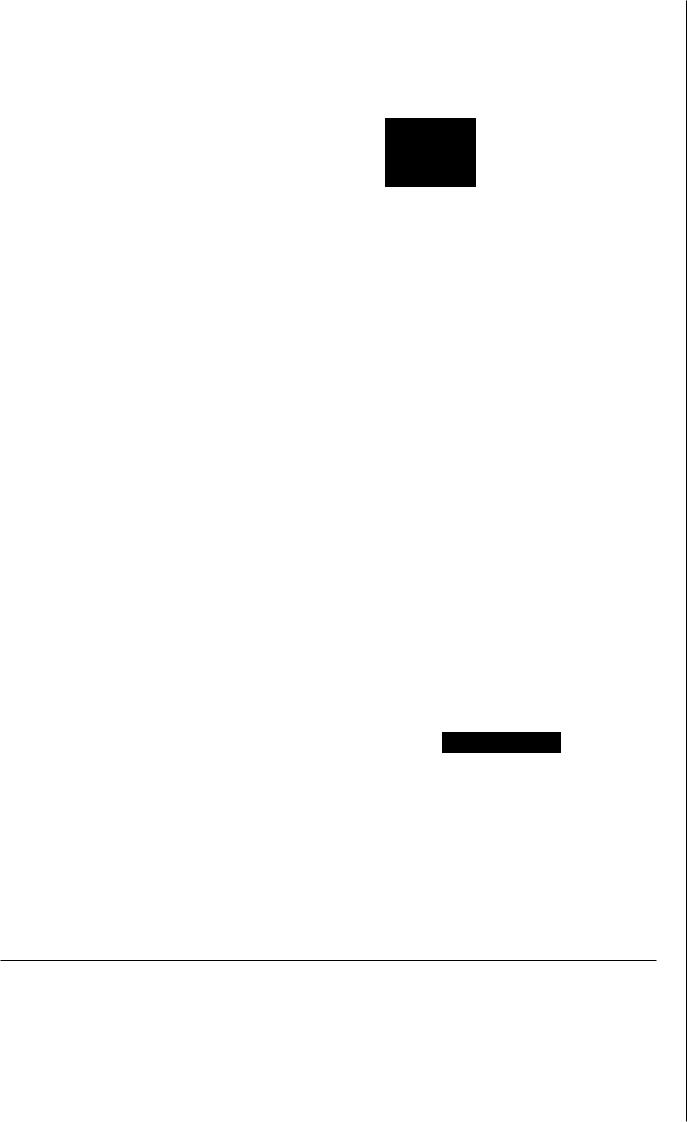
Holpzaphel_-_Nonlinear-Solid-Mechanics-a-Contin
.pdf
4.3 Momentum Balance .Principles |
149 |
Finally, the components of b are given unique]y as
_., |
(4.71) |
which together with (4. 70)a determine the system of forces. |
II |
,..,,.,..,..., ..,,,.,.,............,.,,.,,,.,,,..,... ,.. ,.,,,....... ,.,,,.....,.,... ,........,...,...,....,,,,_ ...,,,,.,,...,.,,,....,.....,,,.,,,.,, ..,,.....,...,...,.,, ..,,.,,,,. ....... ,.., ... ,.. ,.. ,,..,.,,,.,..·...,,,,,.,.,, ..,.,,,,,....,.,.,, .... ,...,.,,,,,:··''"•'·····"'''•''''•'•''•'·:''''''''···'·'''''''•''':'•''·:···'"''''.. .. ''''"':'·... ... .. :•'•"'·::··''':,.. .. ....; .... .. |
|
We call a flow a set of quantities, such as the velocity field v, the spatial .mass
density p and the sy1nmetric tensor |
field u, .i.e.. (v~ p, u), which is associated with |
the system of forces (t, b). To each |
system of forces consistent with the ·momentum |
balance principles (4.44) and (4.45) there corresponds exactly one flow and vice versa. We call a flow (v_t p, u) steady if the associated spatial quantities are independent of time, i.e. avIat = 0, 8p/8.t = 0, Du/8t = 0 and consequently v = v(x), {J = p(x),
(j ·= u{x). Since, for a steady flow, avI Dt: = 0, we have with reference to eq. (2.15 n
. |
= |
V .. |
1 |
d( ')) |
(4.72) |
V • V |
|
V'"" } |
|||
|
|
ry g.ra . . |
|
||
iW
where the relation v · w v = 0 is to be used (since w is skew)~ Hence, the equation of motion (4.53) for a steady flow has the form
v · divu + v · b = pv · *grad(v2) • |
(4.73) |
...., |
|
By analogy with the types of motion introduced on p. 68, a flow is said to be a potential flow :if the ve1ocity field is v = gradq>, with a spatial sca]ar field <I>. Then the spatial acceleration ·fi.e.ld a = vhas the form of (2. l 56h a.nd the equation of mot.ion (4.53) takes on the form
divu + b = pgrad |
( |
D<I> |
1 |
·>) |
(4.74) |
- |
+ -(grad<Jl) ... |
||||
|
|
fJt |
2 |
|
|
A flow satisfying curlv = o is irrotational. By recalling relation (l.274) we conclude that potential .flows are irrotational. If the flow .is steady and irrotational we find that the spatial acceleration field von the right-hand s.ide of the equation of motion (4.53) is simply
. |
1 |
1( |
')) |
(4.75) |
|
v = |
9grac |
v- |
~ |
||
since avI Dt = 0 and curlv = o. |
- |
|
|
|
|
|
|
|
|
|
|
Balance of linear .and -angular ·momentum for .an open system. |
We set up finally |
||||
the momentum balance principles for an open system, i.e. a selected region in .space with control volume nc and enclosing control surface 8f2c, independent of time. By

150 |
4 Balance Prin:ciples |
|
|
integrating the equation of motion (453) over nc: we find that |
|
||
/ |
divudv + / |
bch1 = .!p\rthl . |
(4.76) |
|
|||
nc |
ne |
nc |
|
With divergence theorem (:1.294_) and Cauchy's stress theorem (3.3) 1, the first term
in eq. (4.76) yields, by analogy with (4.5 .I), |
|
|
|
/ |
divudv = .! und.<; = |
/ tds . |
(4.77) |
|
|||
nc |
One |
Dnc |
|
The term on the right-hand side of eq. (4.76) follows by integration over the control volume !le
. |
1· |
. |
1· iJ( JV) |
|
|
||||
.Ip\rdv |
= . |
|
(pv 0 v)ndH + . |
|
~t |
|
dv |
|
|
n(~ |
<Jn<~ |
|
He |
|
|
|
|
|
|
|
- •I |
~ |
|
D ;· |
|
|
|
(4.78) |
|
|
|
(v · n)pvds + Dt |
|
pvclv |
|||||
|
|
|
|
||||||
|
one |
|
nc |
|
|
|
|
|
|
We have used eq. (4.57)., the analogue of the divergence |
theorem O.298), ·the fact |
||||||||
that the volume is time-independent and rule (L53) 1• |
Consequently, by substituting |
||||||||
eqs. (4.77h and (4.78)2 into (4.76) we arrive finally at the ha.lance of linear momentum for a control volume in the form
Dt .1·pvdv = .1·[t - |
(v · n)pv]ds +.1·bdv . |
(4..79) |
|
n(; |
Oflc |
n(! |
|
It states that the rate at which pv .(linear momentum) changes i-~_...the· control volume nc equals the traction vector acting on the boundary control surfac¢ anc of.nc and the flux of {JV entering across o.f2c plus the body force b acting on fie.
In an analogous manner we can show the balance of angular .momentum for a control volume, i.e.
~t/ |
r x pvdv = / |
r x (t - (v · n)pv)d8 + / r x bell! , |
(4.80). |
flc |
ant~ |
n~? |
|
which has a similar interpretation.
EXERCISES
I.Consider a certain point g in the current con.figuration which we refer to as the· mass center of an arbitrary region n of a body B with mass ·m.. It is defined·.:

4.3 Momentum Balance Principles |
151 |
||
(independently of the choice of the point Xo) as |
|
|
|
g(t) = m~n) / p(x, t)xdv . |
|
||
n |
|
|
|
Considering conservation of mass, ni(f20 ) |
= |
11i(H), |
this relation may be ex- |
pressed by change of variables as l/1n(!10 ) |
/~ |
Po(X)x(X, t:)dl/ . |
|
|
• ~ '0 |
|
|
(a)Differentiate g with respect to time and show that the average spatial velocity gand the average spatial acceleration .g of n are given ~y
g(t) = mtn) / p(x, t)v(x, t)dv , |
g(t) = ,. |
tn) { p(x, t)v(x, t)dv . |
n |
1n |
. .• |
|
n |
(b) With reference to -eqs. (4.35) l |
and (4.40) -show that these relations imply |
L (t) = ,,.n(n)g(t) , |
L(t) = ni(fi)g(t) = F(t) , |
which characterize the motion of the mass center and which we already know from Newtonian mechanics (they simple govern the Newtonian par.. tide).
Note the following .important property of -the mass center: linear momentum of .a given arbitrary region n of a body B at t is the same as that of a particle with mass nt(fl) concentrated at the mass center of that region. Additionally, the resultant force F of a given region n is equal to the mass of that region multiplied by the acceleration of .its .mass center.
2.A material vector field U is given by its Piola trnnsformation U = JF- 1u. Using the Piola identity (4.58) shows that DivU = ,Jdivu, i.e. in index notation
8UA/8.XA = J8ua/8:ta.
3.Consider the Cauchy .stress distribution for a .continuum in equilibrium given with reference to a rectangular x 1_, ~c2, :i:3 -coordinate .system. The components of
the Cauchy stress tensor .u are given in .the form
Find the body force ·b that acts on this continuum.
4.The Cauchy stress distribution of a continuum is expressed with respect to a rectangular ·:r. 1, :1:2 , :i:3-coordinate system. The matrix representation of the Cauchy

152 |
4 Balance Principles |
stress tensor u is given in the form
where a and f3 are scalar -constants.
(a)Find ·cJ>{i:2, ~J;3) so that the given spatial stress field satisfies divu = o.
(b)Consider <l>(i:2 , :1:a) from (a) and find the C~uchy traction vector t on the
p··~_ane w= ·:r 1 + x·2 + :1;:i •
5.. ·A polar continuum in motion is .acted on by .resultant couples in addition to the linear momentum pv, the surface tract.ion t and the body force b. Consider a spin angular .momentum p and a body couple c acting over an arbitrary region
a coup.le traction vector m on its boundary surface .an.
(a)Show that the presence of couples does not affect the linear momentum principle, and hence the equations of motion (4.53) are still valid.
(b)Show that balance of angular momentum (4.46) requires that
divM + c + E: uT = ·P |
.or |
oAiad |
. |
a |
+Ca +Eabcar.b ·=Va. ': (4.81) |
||
|
|
:"Cd |
|
where M is called the couple stress tensor. It is a linear operator that acts on the outward unit ve·ctor field n (perpendicular to an) generating the vector m according to
.m(x, t, n) = M(x, t)n or
which is analogous to Cauchy's stress theorem (3.3):i.
(c) Show that the three partial differential equations (4.81.) imply that the stress tensor ..u is not symmetric.
4.4 Balance of Mechanical Energy
In this section we consider only mechanical energy. Other forms of energy, such as thennal, electric, magnetic, chemical or nuclear, .are neglected. For this consideration the balance of energy is not an additional statement to be satisfied, it is a consequence of Cauchy's fi.rst equation of motion (balance of linear momentum).

4.4 Balance of 1"1echanical Energy |
153 |
For subsequent studies we assume a dynamical process given by a symmetric Cauchy stress tensor u = u(x, t) (i.e. a smooth function of x) and a motion x = x{X, t)
which de.forms an arbitrary region no ton. |
|
External mechanical power, ·stress power, kinetic energy. |
·we consider a .set of |
particles occupying a region n in space with boundary surface an and define quantities first in terms of spatial coordinates.
The external mechanical power or the rate of external ·mechanical work 'Pext is defined to be the power input on a region n at time t done by the system of forces
(t,b),i.e.
'Pcxt(t) =It· vcls +Ib · vdv
|
an |
n |
(4.82) |
|
|
tav11 ds + / bavadv . |
|
or |
Pe:ct(t) = / |
|
|
|
an |
n |
|
The dimension of 'Pext is work per time that is equal to power. As usual, the spatial velocity field is denoted by v = x.. The scalar quantities t ·v and b ·v give :the mechanical power per unit current surfaces and current volume·v, respective.1y.
The kinetic energy Kofa continuum body occupying a region n at time tis basically a generalization of Newtonian mechanics to continuum mechanics. We have the
definition |
|
1· 1pv · vdv |
|
|
JC(t) = . |
I pv2dv = |
or |
(4.83) |
|
n!2 |
n 2 |
|
|
|
The stress power or the rate of internal mechanical work Pint which describes the response of a .region n at time t, done by the stress field, is defined by the scalar
'Pint(t) = f u: d&u = / tr{uTd)dv |
or |
Pint(t) = f aabdabdv . (4.84) |
|
n |
n |
|
n |
For a rigid-body motion the stress power Pint is zero since the rate of deformation tensor d, as characterized in eq,. (2.146), vanishes (recall Example 2.12 on p. 99).
Balance of mechanical energy in spatial description. ff only mechanical energy
is considered, balance of -mechankal -energy (in the literature sometimes -called the theore.m of power-expended) follows on using eqs. (4..82)-(4.84). Thus,
|
|
D |
|
|
= 'Pext(t) , |
|
(4,.85) |
|
|
Dt /C(t} + 'Pi11t(t) |
.r |
||||
|
DtD/'l. .. |
~! |
|
,1· |
|
||
or |
|
2 |
|
|
|
|
(4.86) |
|
- |
?.pv dv + |
|
u : ddv = t ·vds + |
b · vdv . |
|
|
|
|
n |
n |
|
an |
n |
|


4.4 "Balance of Mechanical Energy |
155 |
which, by means of eqs. (4.83) and (4.84), is the left-hand side of the ·balance of me- chanical energy (4.85), i.e. the rate of change of kinetic energy JC plus the stress power
Pint· Ill
Next, we introduce a fund.a.mental quamity .at current position x E n and time t which is the sum of all the microscopic forms of energy called the interna·I energy. It is a (thermodynamic) state variable denoted by ec = ec(x, t) (or in other -texts fre- quently designated by u) and is defined per unit current volume. The internal energy possessed by a continuum body occupying a certain region n, denoted by e' is .express- ible as
£(t) = / ec(x, t)dv . |
.(4.91) |
n |
|
The term 'internal energy' was introduced by Clausius and Rankine in the second half of the nineteenth century.
Since only mechanical energy is considered, we state that the rate of work done on
the continuum body by internal stresses, i.e. the stress power Pint'·equals the |
rate of |
|||||
internal energy E. We write |
|
|
|
|
|
|
|
|
Pint(t) = -D t'(t) . |
(4.92) |
|||
|
|
|
0 t . |
|
||
Now, eq. (4.85) may be ·expressed in terms of the internal energy, i.e. |
|
|||||
|
|
|
|
|
|
(4.93) |
or, when written in the explicit form, |
|
|
|
|||
Dt.1·(2I pv |
2 |
+ec)dv=.1·t·vds+.!h·vdv. |
(4.94) |
|||
|
||||||
|
|
|||||
n |
|
|
an |
|
n |
|
The term on the Ieft""'.hand side in the form |
|
|
|
|||
|
|
f |
1 ') |
) . |
(4.95) |
|
|
|
|
( - pv- + Cc |
. |
dv |
|
|
|
|
? |
|
|
|
• .A.I
n
characterizes the tota:J energy. It is the sum of the kinetic and internal energies.. Note that the contributions to the total energy are only due to external sources, i.e. the
Jn order to express the terms of the balance of mechanical energy (4.85) with respect to material ·coordinates at time t, we ·must establish the ·external mechanical power Pext' the kinetic energy K and the stress power 'Pint.in the material description.


4.4 Balance of Mechanical Energy |
157 |
Substituting (4.98), (4.99)i, (4.1.01)1 into (4.85), we have -finally, equivalently to
(4.86), the balance of mechanical energy in the material description, .i.e.
~ ;· ~fJoV2d\! + f P : FdV = ;· T ·VdS + ;·B ·VclF . |
(4.102) |
|||
Dt. - |
. |
~ |
. |
|
no |
no |
<mo |
no |
|
By analogy with the relation (4.94) we now express the last equation in terms of the internal energy defined with respect to the reference volume denoted by e = e(X, t). With dv = .Jdll and :motion x = x(X,i) we ·may write the internal ene1~gy (4.91) as
E(t) = .!ec(x, t)dv = .!ec(x(X, t), t)J(X, t)d'V |
|
|
n |
no |
|
./ e(X, t)dV |
|
(4..103) |
no |
|
|
with the important transformation |
|
|
e{X,t) = J(X,t:)ec(x;t) . |
-(4.104) |
|
Adopting the expression (4.99)t :for the kinetic energy IC and (4.103)a for the |
internal |
|
energy E., we may write the total energy J~(pv2/2 + ec)dv in the mate.rial description as
|
|
|
(4.105). |
Using the equivalence of eqs. (4.82) and {4.9.8) and the total energy in the form of |
|||
(4.105) we obtain finally from (4.94) the desired result |
|
||
gt /(~poV2 + e)dV == |
/ |
T ·VdS + .!B ·Vdl/ , |
(4.106) |
~ |
OOo |
~ |
|
which may -directly be -derived from the balance of mechanical energy (4~ I02). |
This |
||
requires eq. (4.92) with (4.101)1 and (4..103)a, leading to the transformation |
/~ |
P : |
|
|
' |
.ll{) |
|
Fd1/ = D/Dt J~20 ed1/. |
|
|
|
Alternative expressions for ·the -stress power. |
.In the following we write the stress |
||
power 'Pintin different equivalent versions. |
|
|
|
We start from eq. (4.84)1• By using (2.50)., the pull-back of the rate of deformation tensor d, .i.e. the inverse of relation (2.163)4 , the rule (1.95) and the stress relation
(3.65)t we find Pint for a region r20 to be |
|
|
Pint(t} =/Ju: ddF =IJu: F-TEF- 1dF |
|
|
no |
no |
|
/ |
.JF- 1uF-T: EdV = .!S: EdF |
(4.107) |
no |
no |
|

